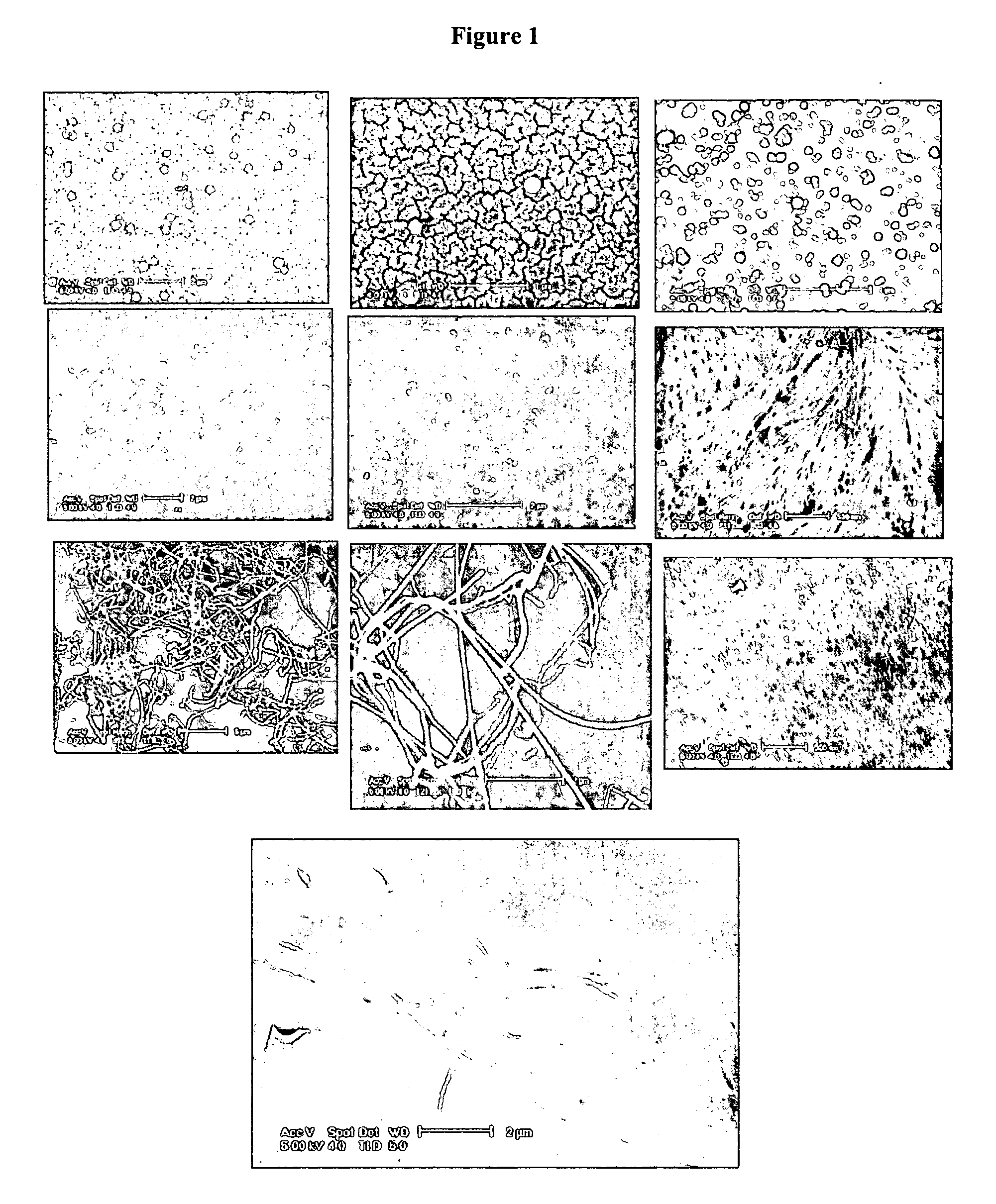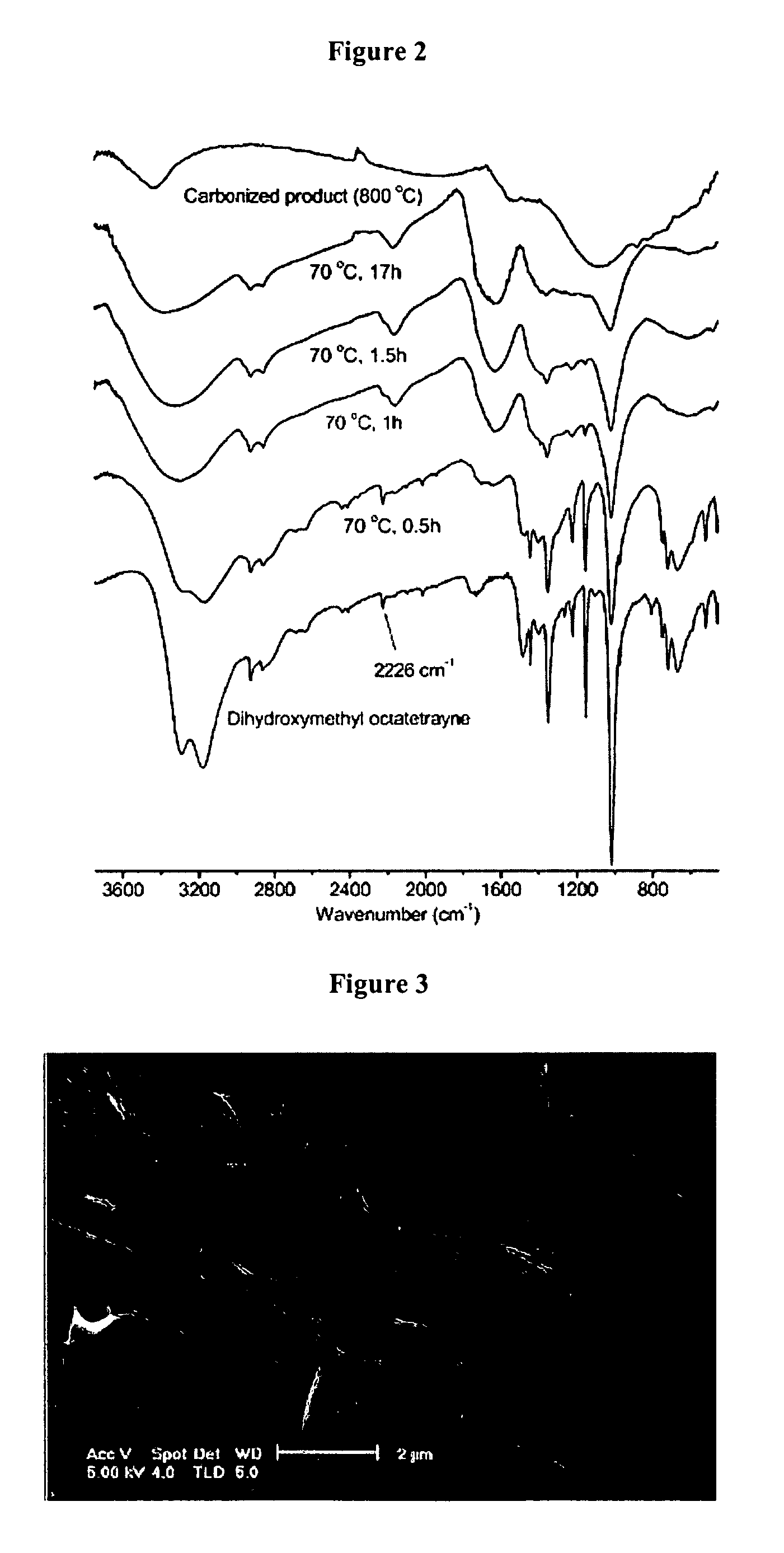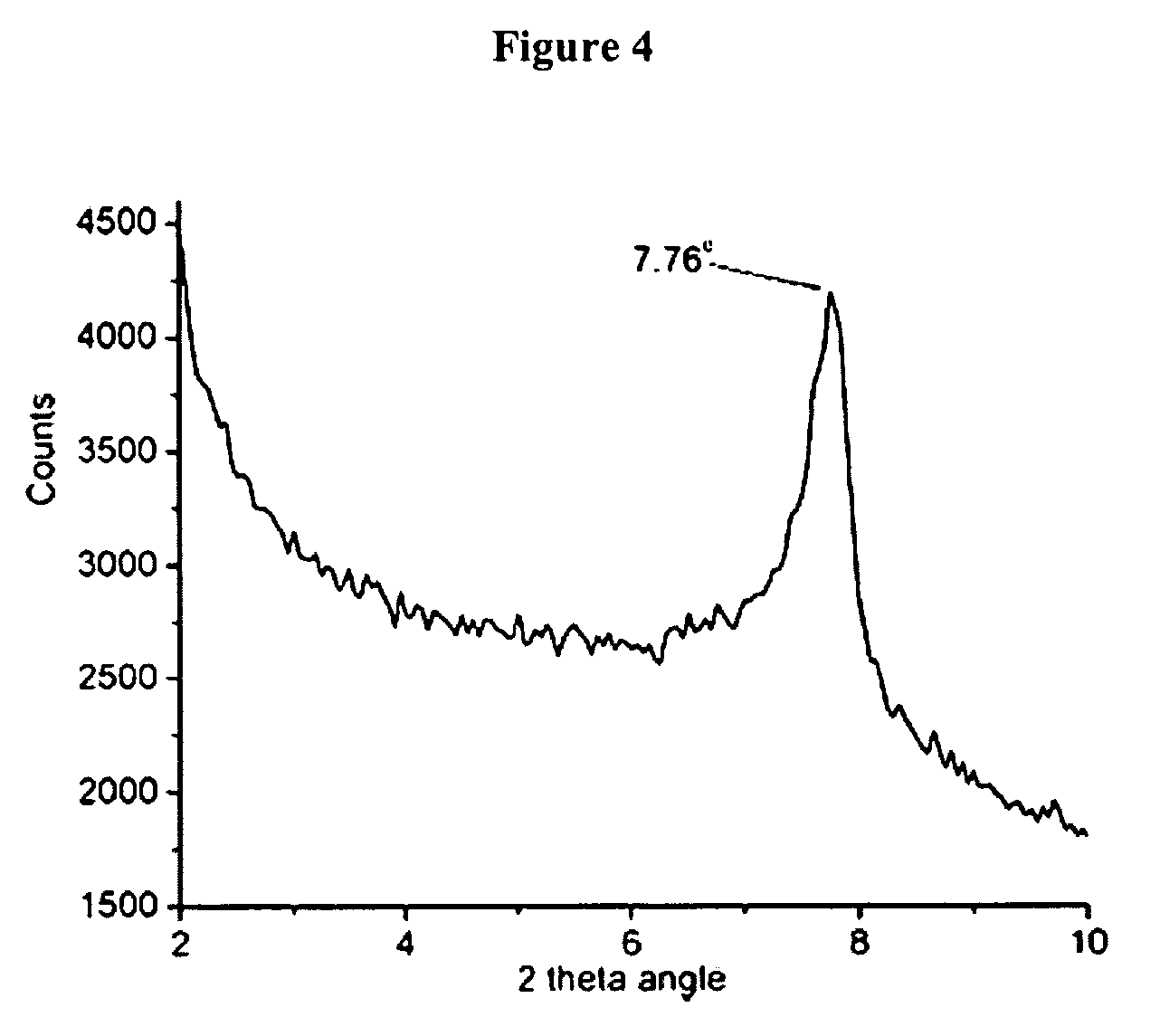Chemical synthesis of polymeric nanomaterials and carbon nanomaterials
- Summary
- Abstract
- Description
- Claims
- Application Information
AI Technical Summary
Benefits of technology
Problems solved by technology
Method used
Image
Examples
example 1
[0044] Preparation of Polymeric Nano-Spheres Materials. 1-iodo-2-(trimethylsilyl)acetylene, propargyl alcohol, bis(triphenylphosphine)palladium (II) dichloride, copper(I) iodide, copper(II) acetate monohydrate, N,N,N,N,-tetramethyl ehtylenediamine (TMEDA), diisopropylamine were used as received from Aldrich.
[0045] Preparation of 1-hydroxymethyl-4-(trimethylsilyl)-1,3-butadiyne To 250 mLof diisopropylamine were added bis(triphenylphosphine)palladium (II) dichloride (0.25 g, 0.356 mmol), copper(I) iodided (0.068 g, 0.356 mmol). The mixture was stirred and degassed with a stream of argon and a mixture of 1-iodo-2-(trimethylsilyl)acetylene (4.0 g, 17.8 mmol) and propargyl alcohol (1.20 g, 21.36 mmol) were added. The solution was stirred at room temperature for 2.0 h and a heavy precipitation was formed during this period of time. The reaction mixture was filtered to remove salts. The filtrate was concentrated with a rotarty evaporator under vacuum and the oily residue was obtained. The...
example 2
[0049] Preparation of Carbon Nano-Spheres The crosslinked poly(dihydroxymethyloctatetrayne) nano-spheres (0.20 g) prepared above were placed in a quartz tube furnace and heated to 150° C. (rate 1° C. / min.) under an argon atmosphere and held at 150° C. for 12 h. The furnace temperature was then increased to 800° C. (rate 1° C. / min.) and fixed at 800° C. for 24 h. After cooling to room temperature, 0.12 g (60%) of carbon nanospheres was obtained from the quartz plate.
example 3
[0050] Analysis of the Nanospheres All NMR spectra were recorded on an Bruker AC-200 spectrometer. FTIR spectra were obtained with a Perkin-Elmer 1600 FTIR spectrometer. The samples and KBr were thoroughly mixed and the mixture was pressed to form a pellet, then the spectra were recorded. Raman spectra were recorded with a Spex 1403 double monochromator, a RCA 31034A photomultiplier, and 514.5 nm laser with ca. 50 mW. Scanning electron micrographs were obtained on Sirion high-resolution scanning electron microscope operating at 5 kV. Poly 1,8-dihydroxymethyl-1,3,5,7-octatetrayne (DHMOTY) samples were placed on glass slides and coated with Pd-Au-alloy prior to SEM examination. Carbon nanospheres were dispersed in hexane and one drop of the dilute suspension was deposited on a small piece of heavily Pd / Au-alloy-coated glass slide. Because carbon nanospheres are electrically conductive, no gold-coating was needed for SEM examination. Number average particle diameters (Dn), weight avera...
PUM
| Property | Measurement | Unit |
|---|---|---|
| Fraction | aaaaa | aaaaa |
| Fraction | aaaaa | aaaaa |
| Fraction | aaaaa | aaaaa |
Abstract
Description
Claims
Application Information
 Login to View More
Login to View More - R&D
- Intellectual Property
- Life Sciences
- Materials
- Tech Scout
- Unparalleled Data Quality
- Higher Quality Content
- 60% Fewer Hallucinations
Browse by: Latest US Patents, China's latest patents, Technical Efficacy Thesaurus, Application Domain, Technology Topic, Popular Technical Reports.
© 2025 PatSnap. All rights reserved.Legal|Privacy policy|Modern Slavery Act Transparency Statement|Sitemap|About US| Contact US: help@patsnap.com



